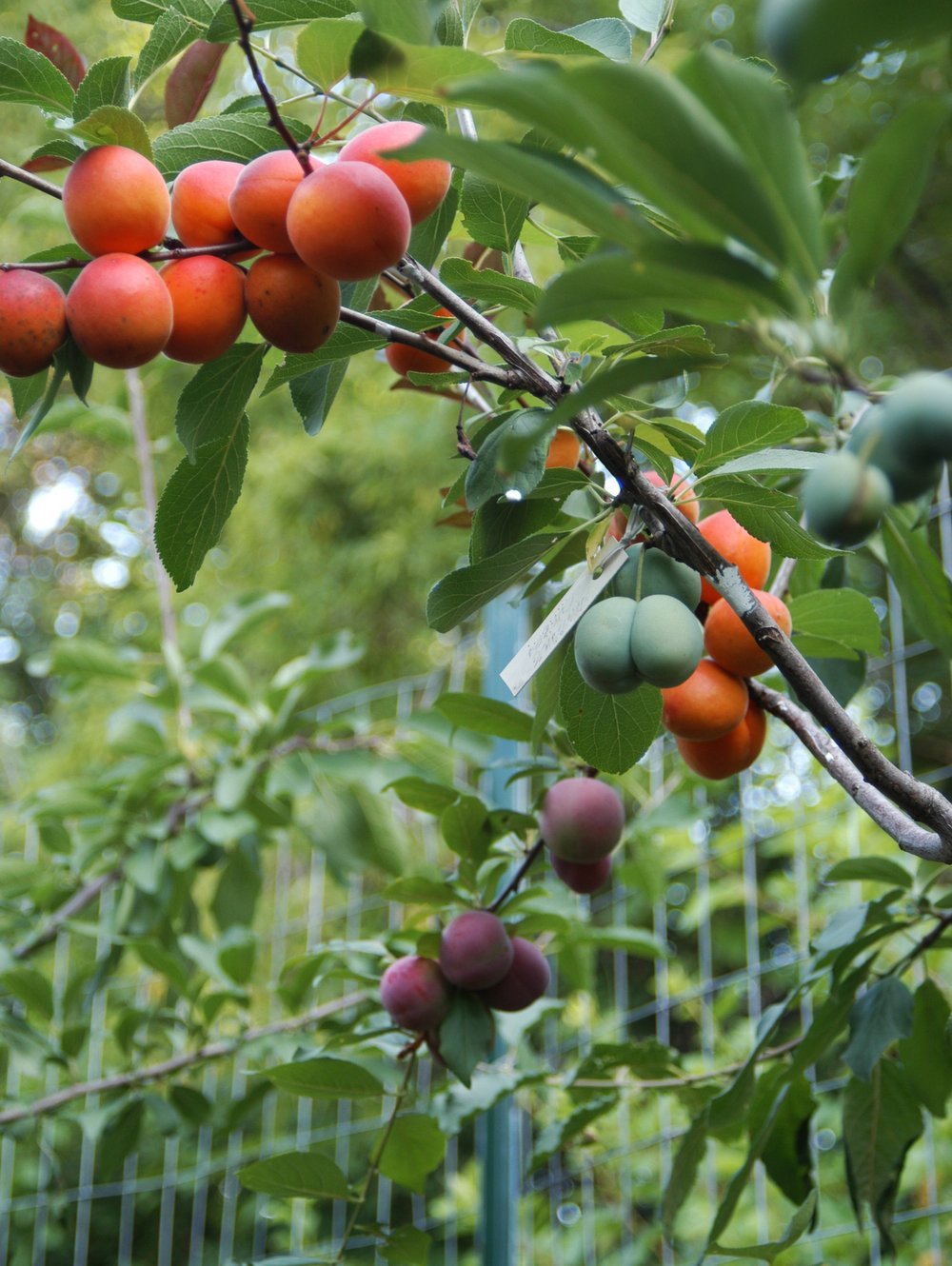Tree Grafting: How to Grow Different Fruits on One Tree
Imagine walking up to a single tree and picking peaches, plums, cherries, and apricots—all from different branches. Sounds magical, right? But it’s real! It’s thanks to an old but simple farming trick called grafting.
One of the coolest examples is the Tree of 40 Fruit series of fruit trees created by Syracuse University Professor and contemporary artist Sam Van Aken. These trees grow 40 different types of fruit! With a little know-how, you can graft different kinds of fruit onto one tree right in your own backyard.
Let’s break down how it all works.
Want to learn more about The Giving Grove straight from your inbox? Consider subscribing to our quarterly newsletter!
What is grafting?
Grafting is like putting two trees together to make one super tree. You take the bottom part of one tree (called the rootstock) and connect it to the top part of another tree (called the scion). The rootstock handles the roots and controls the size of the tree, while the scion produces the fruit.
When you match the scion and the rootstock just right, the tree grows strong, produces better fruit, and can even have better resilience to cold weather and diseases.
Why graft fruit trees?
If you plant fruit tree seeds, you don’t always get good fruit. In fact, the new tree might give you tiny, sour fruit—or none at all! Grafting guarantees that you get the exact kind of fruit you want, like sweet Honeycrisp apples or juicy Bartlett pears. Plus, grafted trees start producing fruit faster.
Photo credit: Sam Van Aken, Tree of 40 Fruit
Grafting also lets you:
Grow more than one kind of fruit on a single tree.
Spread out your harvest season.
Help trees pollinate each other better.
Save space in small gardens.
What Trees Can You Graft Together?
You can only successfully graft trees that belong to the same plant family.
For example:
You can graft an apple to another apple tree, or even graft a pear onto an apple tree, because they are in the same family.
You can graft peaches, plums, apricots, and cherries onto each other because they belong to the same Prunus family.
But you can't mix trees from completely different families. For the graft to survive and grow properly, they need to be close botanical relatives.
When and How to Collect Scion Wood
If you want to graft, you first need to collect scion wood, the piece you’ll attach to your tree.
Here’s how:
Collect scions in late winter or early spring while trees are still asleep (dormant).
Pick scions from last year’s growth that are straight, healthy, and about the width of a pencil.
Store them in a zip-lock bag with a damp paper towel in the fridge until you're ready to graft. You can sanitize them with a dip in a 10:1 (water:bleach) solution for 10 minutes or dip them in hydrogen peroxide and allow it to dry to kill any pathogens.
Be sure to store them away from any ethylene producing fruits (like bananas or apples, as they can cause the buds to wake up too early.
Grafting Tools You’ll Need
You don’t need fancy equipment to graft.
Basic tools include:
Sharp pruning shears
A sharp “single bevel” knife (only one sharp side)
Wax grafting tape (electrical tape also works)
Graft sealant (i.e. Doc Farewells, TreeKote or Latex paint)
A pen and plant tags (to label your grafts, ideally metal)
Basic Grafting Steps
Here’s a simple method called the cleft graft:
Cut the rootstock where you want to graft - splitting the branch in the middle, open slightly, as long as the cut on the scion wood will be. Make sure the cut is clean and smooth.
Cut the scion wood into a wedge shape. Aim for at least a 1 inch cut.
Split the rootstock a little (just enough to fit the wedge).
Carefully insert the scion wedge into the split, lining up the green inner layers (called the cambium) of both pieces.
Wrap it tightly with grafting tape to seal it.
Add graft sealant over the cuts and top of scionwood to prevent drying.
Final Tips
Label your grafts. It's easy to forget what you put where!
Be patient. Grafted trees usually need 2-3 years before they produce fruit.
Use local scion wood. Trees already thriving in your area will have the best chance of success.
If you can, taste the fruit first. No one wants to graft something they don’t actually like to eat!
Best of all, grafting lets you stretch your harvest season. You could have apples ready in August and more ripening into September, all on the same tree! Grafting is a fun, rewarding way to get the most out of your garden space and enjoy a whole orchard’s worth of flavors from one single tree.


